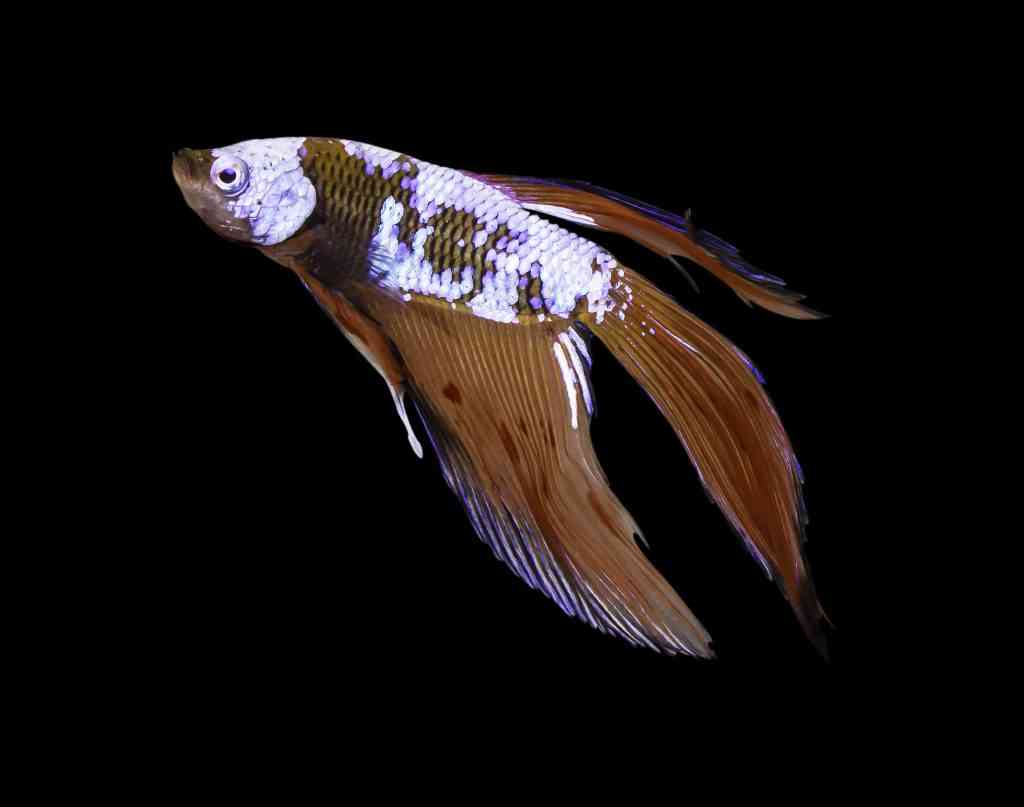How to set up a proper tank for a betta and master the basics of fishkeeping
Betta fish (Betta splendens), also known as Siamese Fighting Fish, are among the most beautiful and entertaining aquarium fish available. Their vibrant colors, diverse fin varieties, and curious, interactive nature make them extraordinarily popular pet fish. Many lifelong fishkeepers began their beloved aquarium hobby with a betta. To ensure your betta thrives, it’s essential to learn the basics of good fishkeeping and apply them to setting up your betta fish tank.
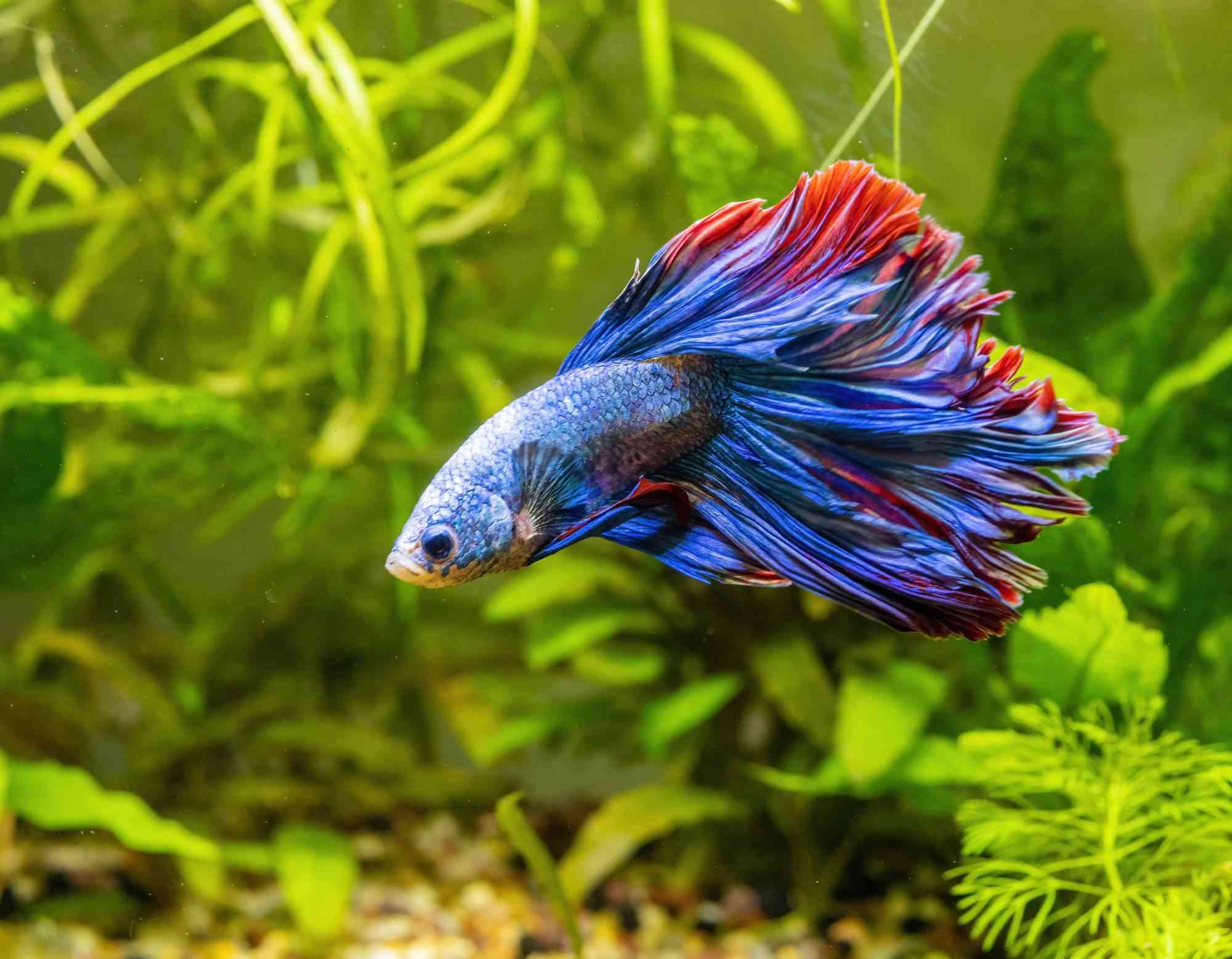
Aquarium selection & size
A 5 gallon aquarium is the minimum recommended size to keep your betta healthy and ensure the best welfare of your fish. Male bettas should be housed alone, as they will be relentlessly aggressive to any other betta in the tank. Do not keep two betta fish in one tank. While female bettas have the potential to cohabitate, betta sororities can be difficult to manage and are best left to more experienced keepers. In tanks smaller than 5 gallons, water quality can degrade and temperatures can be difficult to fine-tune.
Bettas are also highly interactive fish who like areas to explore and hide in. Without enough room to swim, they can become bored and spend a lot of their time swimming back and forth at the front instead of displaying more normal fish behaviour. In a 5 gallon betta tank, you will be able to watch your fish explore the environment and eventually, approach the front when he or she sees you coming with food. This size of aquarium can offer them everything they need for the best chance at a healthy life, although a 10 gallon aquarium is an even better choice if possible.
While bettas do have the remarkable ability to breathe atmospheric air using a specialized labyrinth organ, too many use this as an excuse to force them into survival conditions without considering their overall welfare. While breeders typically “jar” male bettas in 1 gallon jars to grow them out, in these scenarios they typically have appropriate ambient temperatures, a supply of live food, and the ability to do daily, easy water changes. Bettas shouldn’t spend their entire lives in this condition. As aquarists, we want our fish thriving, not just surviving.
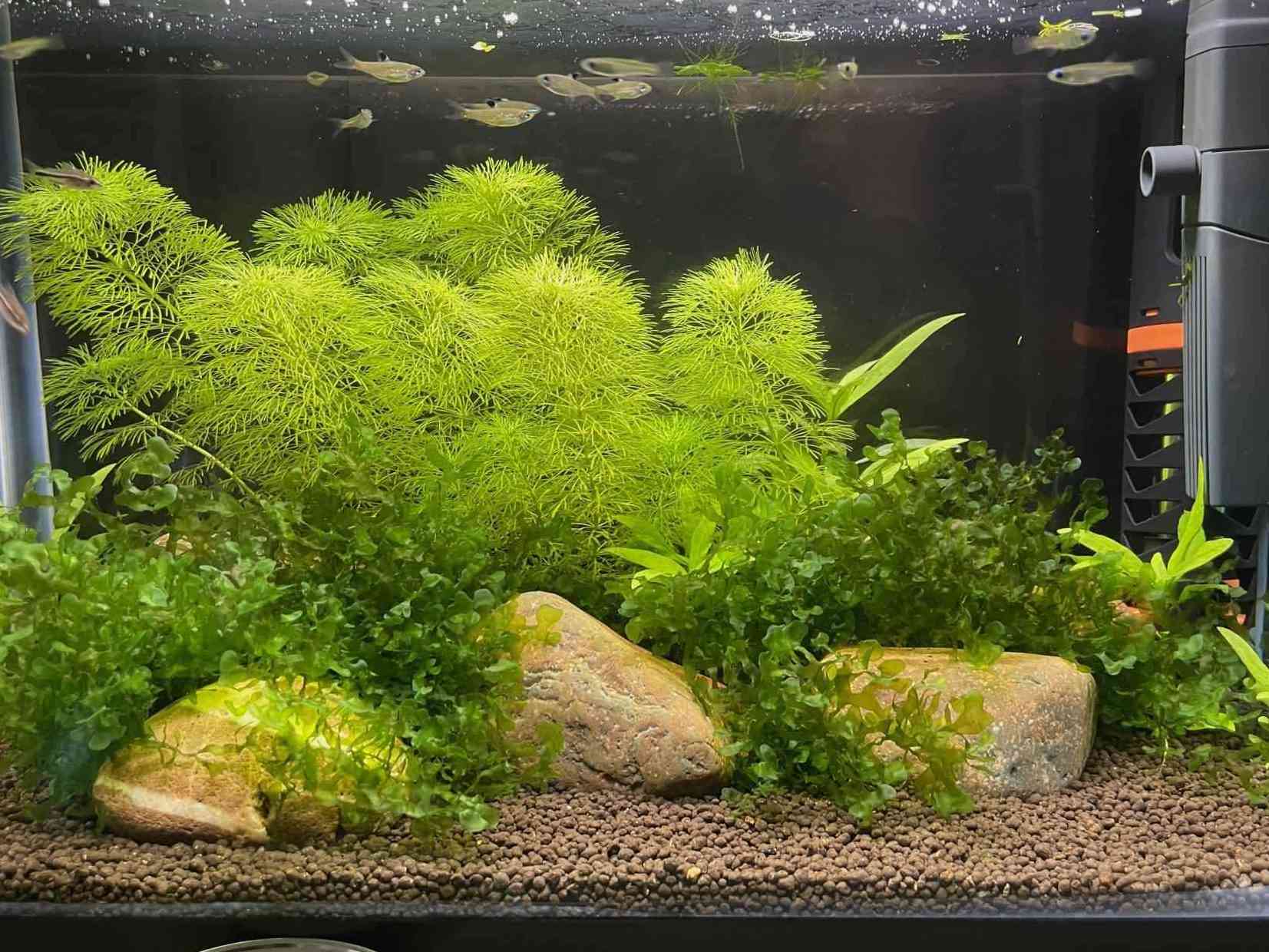
Substrate
The choice of substrate can be influenced by whether or not you choose to try growing live plants, as we address further along. If you intend to grow live plants, ADA Aquasoil, Fluval Stratum and Seachem Flourite are some popular brands that work well for growing plants.
If you aren’t trying to grow live plants, you can choose almost any other type of substrate. Traditional aquarium gravel, filter sand, or even brightly coloured gravel, if you’re going for a certain “new fish tank” look, are all options bettas will do just fine with. Caribsea substrates are also popular, but avoid any calcareous or coral sand substrates. Although bettas are adaptable, that type of substrate can raise pH and add a lot of minerals to the water that they don’t specifically require.
Adding Water
Most domesticated bettas (unlike wild betta species, which have very specific water quality requirements) tolerate a wide range of water quality and most will fare well in dechlorinated tap water regardless of the pH. In general, domestic bettas can adapt to a wide range of water conditions, so focusing too much on changing pH or hardness in your betta tank is typically unnecessary. When you fill your aquarium, we recommend using a common brand of water conditioner such as Seachem Prime, or other dechlorinators, to remove toxic chlorine compounds prior to introducing your fish.
Heating
Heating is straightforward for a 5 gallon aquarium but is trickier for smaller tanks. 25-watt heaters can maintain an adequately warm temperature for a 5 gallon aquarium. Marina 25-watt is a brand we use often for our smaller aquariums. You can also use a 50-watt heater of most brands if you cannot source a 25-watt.
You will also need a reliable aquarium thermometer so you can adjust your heater to the right temperature over several days of monitoring. We like digital thermometers, but glass or even stick-on thermometers are usually good enough to get the temperature into a range appropriate for your betta.
If you’re new to installing an aquarium heater, remember never to expose the glass heater coil to air while it is turned on because the glass can crack. Only plug the heater in once it’s been placed in the aquarium and read the package insert to ensure you have it installed at the proper water depth, including use of a drip loop which is good practice and described in most aquarium equipment manuals.
While many brands advertise being submersible, in our experience you can help a heater last much longer by keeping the dial above the surface of the water to avoid water ingress into the tube. When you change your water, remember to temporarily unplug your heater so the glass isn’t exposed while the heater is on.
Bettas do well in a temperature range of 75-80 °F (24-27 °C). They are so much more active and pretty when kept nice and warm! They act nothing like the sad, clamped-fin bettas sitting on the bottom that you might’ve seen languishing in a vase or cup.
Filtration
Filtration is very much a choose-your-own-adventure situation. There are many considerations. The simplest and least expensive approach for a basic betta fish tank is often a sponge filter with an air pump. It’s a tried and true solution that many advanced hobbyists continue to rely on.
Air pumps can sometimes be noisy, so if the aquarium is 5 gallons and will be in your living space, you could consider a very small piezoelectric pump to power the sponge filter, which is much quieter than traditional diaphragm air pumps. Nicrew makes a model we love for small tanks.
If complete silence is your goal, you might not even like the sound of the bubbles breaking at the surface if the aquarium is in a bedroom. In this case, you might do best with an internal canister filter such as the Eheim Mini Up, but beware of having too much flow.
Bettas, especially domestic ones with elaborate finnage, do not appreciate strong currents. Buy the smallest decent internal canister you can find for the tank, and set it up so the flow is hitting the side wall of the tank, or dispersed using one of the spray output fittings. If you’re creative, you can build a mesh baffle out of needlepoint plastic mesh to slow the flow down and prevent too much current. Other ‘hacks’ to reduce flow coming into the aquarium from an external canister filter include the use of a baffle made from a coarse filtration sponge or even a new plastic soap dish to diffuse the water flow on its way back in.
In any case, male bettas especially appreciate an area of the surface that is stagnant, for building their bubble nests. If you see a pile of bubbly foam that he tends in the corner one day, you’ll know your betta is happy with the environment!
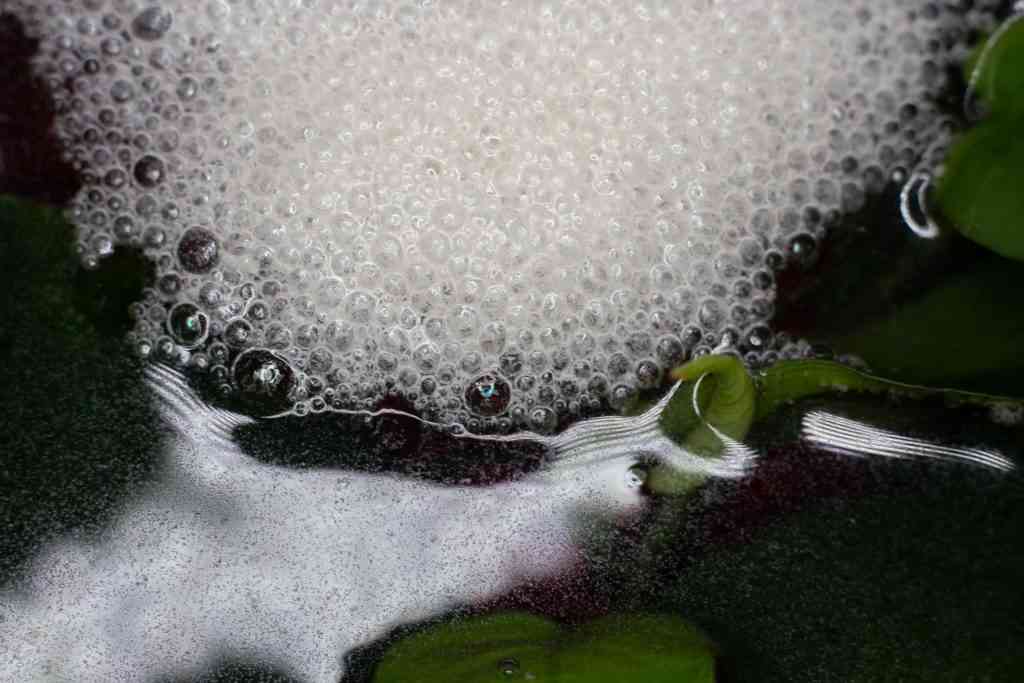
usually a sign your male betta is comfortable!
To establish your filter properly, consider whether you may have a friend or perhaps a member of a local hobbyist group who has an established healthy aquarium. You can ask them to give you a dirty piece of floss or sponge from their canister filter or to squeeze out their sponge filter into a bag or yogurt container, then bring this lovely, living “gunk” back home and introduce it to your filter and tank.
Adding filter “gunk” might seem counter-intuitive if you’re new! Don’t you want to keep everything sparkling clean? No! Aquariums are tiny ecosystems. They need to be inoculated with the bacteria that help process the waste the fish produce. Think of it like that sourdough starter you (or maybe that awesome friend who baked you bread) got during the pandemic. Yes, you can start with nothing and just let the environment colonize it, but it will take longer.
If you don’t have a source of aquarium bacteria, it is recommended to have your aquarium set up with a stable temperature, for at least 2 weeks before adding your first fish. The full nitrogen cycling and establishment of your beneficial bacteria colonies will take as long as a couple of months from scratch, and require more water changes as noted below, in the early days with your betta.
Lighting
Lighting, like your substrate choice, will be informed by whether or not you choose to grow live plants. Our favorite option for lights are dimmable LED’s, which are much more commonly available now than they were a few years ago. Chihiros, Aqualife and Aquarium Co-Op make a great LEDs at various price points. The beauty of dimmable LEDs is you can start with lower light so that you don’t get too much algae. If using live plants, you can observe how they grow, and increase the light as needed, or as you advance and try new plants that might need more light.
If you don’t want to start with plants, you can still get a dimmable LED and perhaps if things go well, you can try plants in the future and have the option to provide more light. The light can grow along with you in your hobby.
Opting for an aquarium hood with a built-in lid, or a 5 gallon package that comes with a canopy, is helpful because bettas are great jumpers and no one wants to find their pet betta dried-up on the floor. Despite the new styles of open-top tanks being so popular, we simply do not recommend keeping a betta without a tight-fitting lid! If you opt to buy a separate light like the type we recommend, you can get a glass aquarium lid to fit under it and prevent any escape routes. It also helps with reducing evaporation.
If you can’t find the right size lid for your tank, you can have a piece of glass custom cut fairly easily, or even use glass from cheap picture frames. While picture frame glass is pretty thin, if you handle it carefully, it can do the job for a 5-gallon aquarium with no weight on the lid. If you’re looking for luxury or have an odd-shaped aquarium, several companies manufacture custom lids, often made from polycarbonate.
We prefer to use digital timers on our lights to provide a stable photoperiod and avoid lights being left on for too long and causing an algae bloom. 8-12 hours of light a day is more than enough, and even less light can help avoid algae issues.
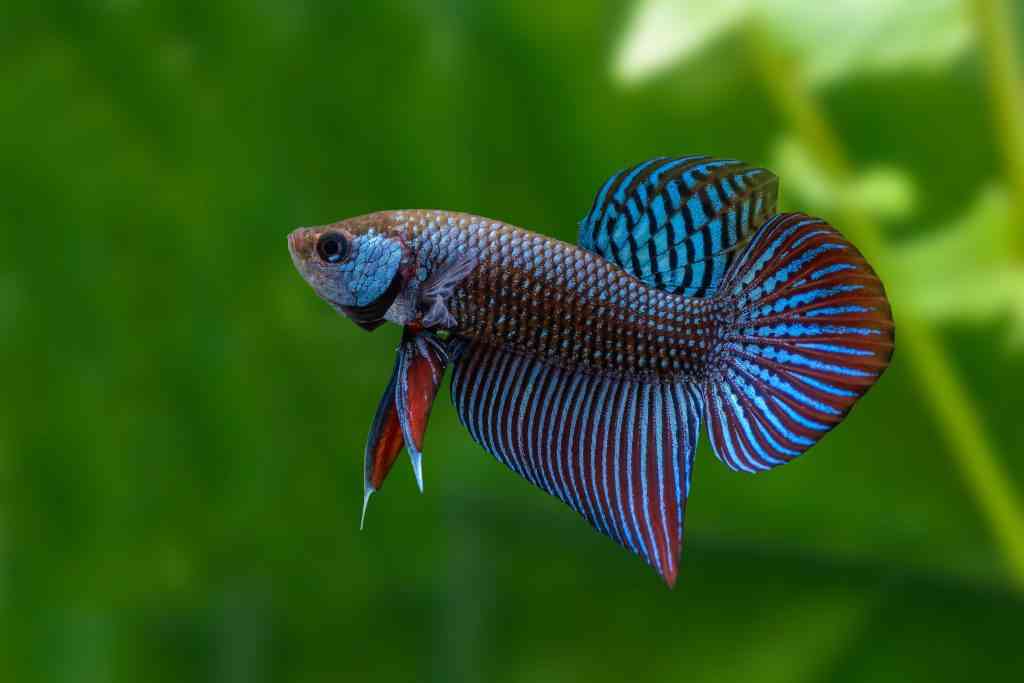
.
Plants
Live plants really take your aquarium to the next level in terms of beauty and natural feel. Bettas can also benefit from live plants—they help water quality by directly uptaking ammonia and nitrogen, and provide places to hide and some shade.
If you’re new to aquariums, it might seem intimidating to add aquatic gardening to the list of new skills you need. Fortunately, there are several undemanding aquarium plants that you can try, including Java moss, Java fern, Hornwort, Water sprite, Subwassertang, Marimo moss balls, and floating plants such as Watermoss (Salvinia) or Frogbit, or some substrate-growing plants like Sagittaria. Many of these plants can tolerate lower light and do well with the dimmable type of LED’s we recommend above.
If you prefer to start with some artificial plants, there is nothing wrong with that. There are many attractive silk plants and other betta habitat items available. Just be careful not to get any type of plants (especially plastic ones) that are too sharp, because bettas can tear their fins on these.
Hiding Spots
We have so many amazing options for aquascaping our tanks available to us. Different driftwoods like spider wood pieces are usually small enough for betta aquariums, and provide some interest and areas for your betta to hunker down in or explore. There are many artificial “betta hides” available too. Bettas are not picky so will generally use these too. If rocks are more your style, you’ve got so much to choose from. Dragon stone is one of our favorites for smaller aquariums.
Take care to avoid any decor that has holes in it that are just the wrong size: bettas will explore and get stuck, which can be heartbreaking. Pick something with holes that are really big, or really small, to avoid this.
If you’re designing a more naturalistic aquarium, consider adding some “botanicals” to your aquarium. Some that are commonly available are the perfect size for bettas to hide in, such as different tree seed pods like “monkey pots”, Sterculia pods, Bael tree and Cariniana pods. Be sure to only use the ones your betta can’t get caught in, since they’re natural products that can have a lot of variation. Indian almond leaves (Catappa leaves) are common additions to betta aquariums as well.
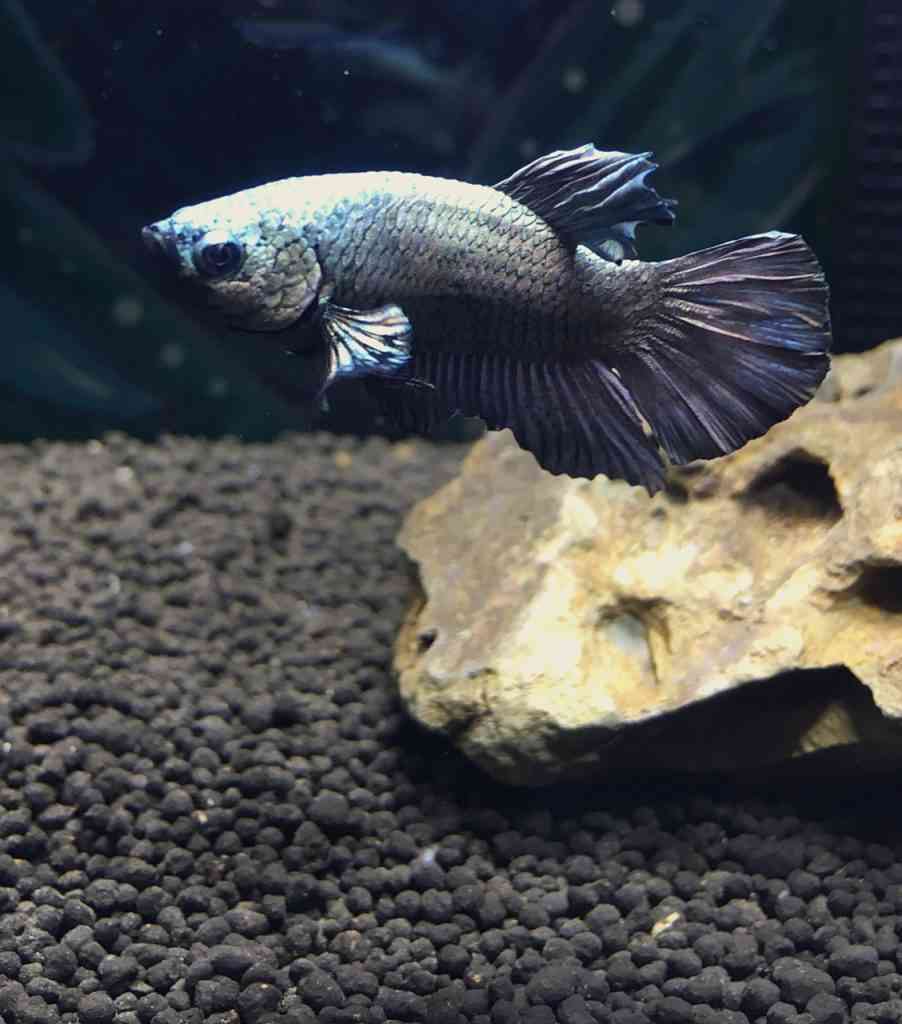
Tankmates
Tankmates for bettas can be controversial. Individuals can have different temperaments, so just because someone succeeded with one type of fish or shrimp with their betta does not mean you’ll have the same experience.
Mystery snails often work well with bettas, although some bettas will nip at them. In a 5 gallon tank, adding too many other fish can quickly get crowded and impact water quality. Bettas can be territorial too, so if you add other fish later on, be prepared to potentially move them out or separate them if it isn’t working.
Conversely, some smaller fish like tiger barbs can be aggressive and damage the fins of the betta. Some nano species like ember tetras or small rasboras have the potential to work, but, your betta might be a unique type of fighter who just won’t take kindly to others in its space.
We usually keep our domestic bettas as the sole fish. You’ll hear about betta sororities where people are keeping a group of female bettas, but this is not recommended for a 5 gallon or a first tank, as it’s far from guaranteed that they’ll get along without fighting—it doesn’t work out just as often as it does, in our experience.
Where to Buy Your Betta
You’ll want to make sure that your tank is stable, the water temp has stayed in a decent range over at least 4-5 days, and that you’ve considered whether you can get some existing filtration media from someone to inoculate your tank’s beneficial bacteria. Then… it’s time to get your betta!
When you’re looking for where to buy your betta, avoid stores that keep their bettas in a single cup sitting on a shelf. While the fish can usually survive this, it is stressful on them and can make them weak. It is also harder to tell if the fish you want to buy is healthy and active when they’re cold and stressed. We only buy from stores that keep bettas in heated, filtered units.
While some store units can be small, if the water is circulating, heated, and filtered, like in a “betta barracks” type of setup, it is enough to keep them healthy short term until they get to their new home. Don’t support the businesses that don’t take at least this level of care with a living being. Besides, if you’re splurging on a fancier betta, like a koi halfmoon plakat, you could easily pay more than $50 per fish, so find a supportive local fish store to patronize that respects their bettas as much as you will.
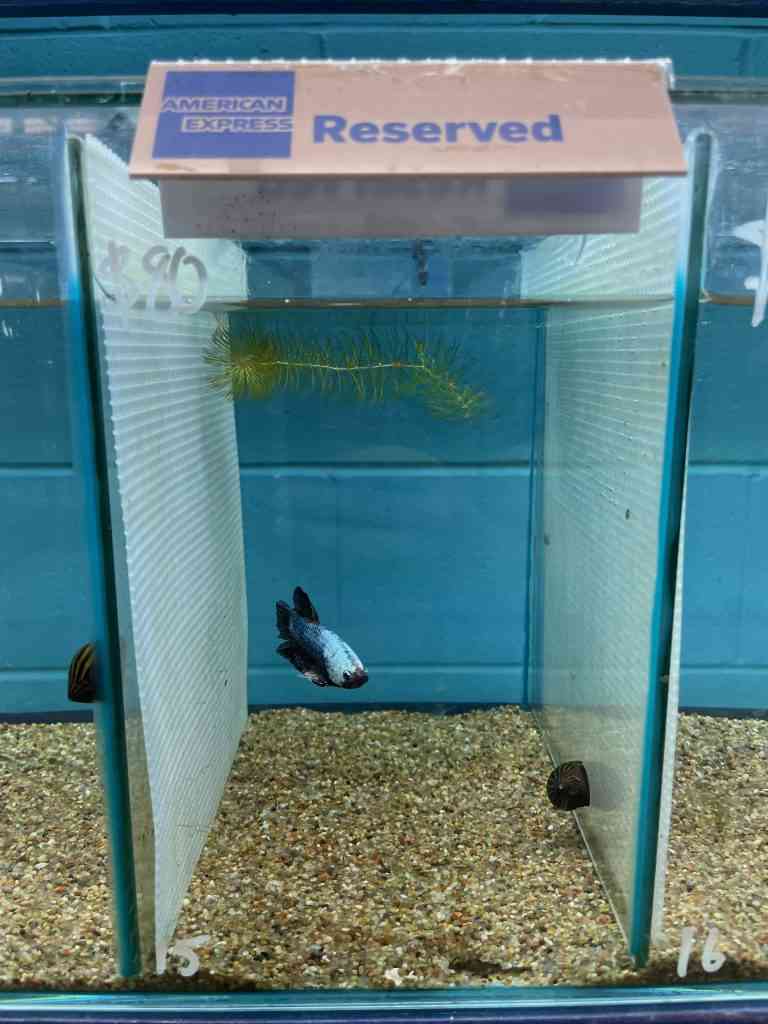
Adding Your Betta
When you bring your betta home in the bag from the fish store, turn off your aquarium light and float the bag in the tank for about 15 minutes. This helps equalize the temperatures.
Then, open the bag, use a small clip or part of the lid to hold it in place, and start to gently scoop small portions of tank water into your betta’s bag to allow for slow adjustment to the specific pH and water parameters your tank has.
In general, fish can be acclimated in 30 minutes or less. There is usually no need for extensive drip acclimation unless your fish are very delicate and if you are making a big adjustment in pH or other parameters. Once your betta has had about ⅔ of the water in the bag from the tank, you can start to push the edge of the bag under the surface water and help the water mix even more. Eventually, your betta should be curious to swim out and check out the new home you’ve created!
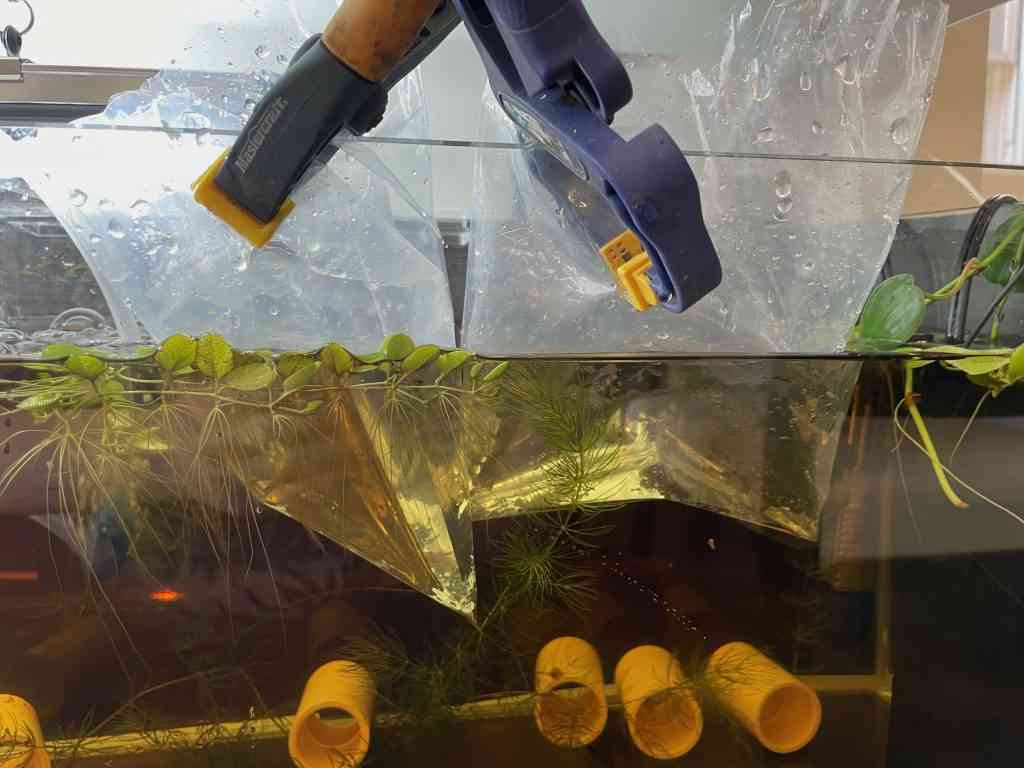
Food and Feeding
Feeding a domestic betta need not be complicated. They usually do very well with the pellets sold especially for them, but almost any general tropical fish pellet that can fit in their mouth can support a betta well as a staple diet. We have used OmegaSea floating betta pellets successfully. We also favor Fluval’s Bug Bites betta food, because the first ingredient is black soldier fly larvae, and bettas are primarily insectivorous in the wild.
Floating pellets are helpful for many bettas because not all domestic bettas are very talented eaters. Aside from the long flowing fins and domesticated genetics, life has been made pretty easy for most of them and they rarely have to hunt for food. If they don’t find the food easily, sinking food can fall between gravel and contaminate your aquarium.
For treats, frozen food such as bloodworms or brine shrimp can be offered, but don’t overfeed. Bettas will gorge themselves on frozen food and their gastrointestinal system sometimes does not handle this well.
Feeding 3-5 pellets once or twice a day is plenty for your betta. Don’t be afraid to skip a day here or there, either. People get unnecessarily stressed about time away. It is often better to leave a healthy, well-fed fish without food for a few days than to have someone unfamiliar come in and feed your fish, which can sometimes result in overfeeding that fouls the water and hurts your fish.
Betta Aquarium Maintenance and Cleaning
Regular water changes are important for the long-term well-being of your betta. They are especially important in the early days with a new tank with its first fish. As your betta breathes and eats, ammonia is the byproduct they will excrete. Ammonia is toxic to fish at pretty low levels. Therefore we do recommend keeping at least an ammonia test kit on hand and checking this in the first couple of months as the system stabilizes and your bacteria grow to accommodate and process the waste your betta produces. If ammonia or nitrite are present, or you notice strange behavior from your betta, the first step we recommend is performing a large water change.
If the new water temperature is within a few degrees, and if you use a dechlorinator as recommended, most fish can tolerate a 50% water change well. Seachem Prime is also a great product to have on hand because it can detoxify ammonia and nitrite when dosed according to the instructions. In general, 30% water changes once a week are recommended for the first couple of months. After everything is stable, you can shift this to once a month for maintenance, along with a gravel siphon of part of the gravel each time, and a filter clean of part (but not all) of the filter.
How to Clean a Filter Properly
Remember that wonderful gunk we talked about? The beneficial nitrifying bacteria that colonize our filters and keep the water free of ammonia and nitrite, which would otherwise poison our fish in an enclosed aquarium, also have to be cared for. Avoid rinsing your filter media with hot or tap water, as this and chlorine can kill these precious nitrifying bacteria.
Instead, we recommend that you take your bucket of aquarium water from your water change, put your filter media into it, and gently squeeze some of the debris off before reinstalling the filter. This way the bacteria isn’t exposed to anything aside from tank water, and you’re not rinsing away so much of it that you severely impact the bacteria colony.
Sponge filter media can last years without replacement. If you must replace it because it has degraded or is starting to break down, don’t replace it all at once: just do one piece every couple of months. Alternatively, if replacing a filter, add your new filter and run both filters for several weeks before removing your old one, to help the new filter colonize with nitrifying bacteria. Avoid the urge to overclean or over-sanitize an aquarium. Regular maintenance is important, but tearing down an aquarium completely and cleaning all components unless there is some very specific reason for it such as a disease, is almost never recommended.
Focusing on the Basics
Once you have a handle on the basics with your first betta aquarium, you can apply these concepts to any size aquarium. Caring for your nitrifying bacteria, maintaining a stable temperature, instituting a regular maintenance routine, using the right fish food in the right amounts, thoughtful fish acquisition, and the right aquascaping for the fish you want to keep is really all there is to it at the absolute core of it.

